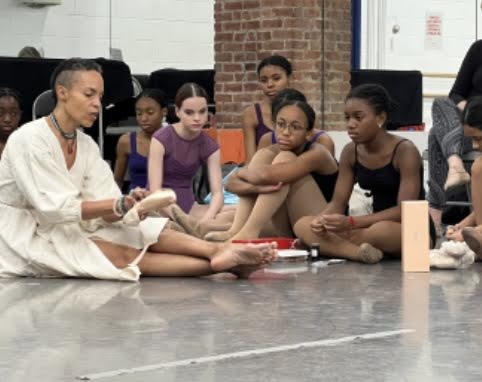What’s the Pointe?
Marie Taglioni is the ballerina often credited with pioneering dancing sur les pointe, on toe, in the 1820’s. Although the practice already existed in a gymnastic way, as a kind of athletic trick, Taglioni refined it, giving it the qualities of elegance, ease and delicacy that we associate with ballet today.
Taglioni was often depicted as a sylph, an otherworldly creature, who seemed to float through the air, her natural habitat. And for today’s young dancer, receiving one’s first pair of pointe shoes still retains a feeling of magic. It’s an invitation, an initiation and a moment that they will never forget.
I remember the first time I stood on pointe: my teacher handed me an old pair of pointe shoes that she’d found in the costume closet and said, “You can play around in these.” They were a few sizes too large and smelled of dry-rot. The satin was ragged at the tips and seemed to be sprouting like an old potato. But I didn’t care about their age or appearance. Without hesitation, I put them on my feet and began dancing around like I had been handed the keys to the kingdom.
Robert Garland and I recently accompanied students and parents to the dancewear store, On Stage, in order for the girls to be properly fitted. The shoes have evolved a great deal since Taglioni’s time. As a testament to Dance Theatre of Harlem’s impact, many brands now manufacture shoes in various skin tones, in addition to the traditional pink. All of the fitters were extremely knowledgeable in their craft and one of them was even a DTH alum, Siobhan Harvey.
After the students had their shoes, I conducted a pointe shoe workshop to give them tips on how to break the shoes in, how to sew them correctly and how to dye them to match their skin tones (for those who had bought pink shoes). One of the parents asked, “If they need to be broken in so much, why don’t they just sell them that way?” Well, while certain aspects of the shoes can be specially ordered to accommodate an individual’s preferences, getting them to the place where they look good and facilitate movement is so subjective as to be impossible to achieve without the dancer’s own hands, feet and sweat working to mold the shoe. There is an art to preparing one’s shoes that is inextricable from the art of dancing itself. While you are working on the shoe, you are infusing it with your own vibrations. Ultimately, the shoe should feel like an extension of one’s own body. The great Cuban ballerina, Alicia Alonso, was rumored to sleep in her pointe shoes to that end. There is something metaphysical about the connection to the shoe. While teaching class, I sometimes joke, in the cryptic language of The Matrix, “There is no shoe…”
Fairies and sylphs aside, it takes a lot of work to create magic. Arthur Michell inspired and demanded excellence in pointe work from all his ballerinas. I am grateful for the opportunity to pass that tradition on to the next generation of DTH dancers and look forward to helping them shape the worlds they will create.


